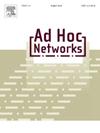农业物联网传感器网络中的智能预测系统
IF 4.4
3区 计算机科学
Q1 COMPUTER SCIENCE, INFORMATION SYSTEMS
引用次数: 0
摘要
灌溉是指通过水泵向土壤供水,并在田地里喷洒水的过程。在传统农业中,灌溉系统的安装和操作完全取决于农民的知识。联合国粮农组织(FAO)预测,到2030年,新兴国家的灌溉面积将增加34%,尽管用水量只会增加14%。因此,这种变化强调了不断监测水流和水量的必要性,而不是依赖于人们的近似值。因此,本研究提出了一种高效的农业物联网(IoAT)传感器网络智能灌溉预测系统。在建议的方法的初始阶段,农业传感器数据以乘法器的交替方向方法(ADMM)方式传输到总变差正则化,以减轻噪声样本带来的不利影响。随后,利用概率聚类来处理缺失条目。在该算法的第二阶段,从感官数据中提取拉格朗日L1点,然后提取用于预测的最大似然行。在大量的农业传感器数据集上进行了实验评估,并使用多个矩阵进行交叉验证,证明了其优于竞争方法的有效性。本文章由计算机程序翻译,如有差异,请以英文原文为准。
An intelligent forecasting system in Internet of Agriculture Things sensor network
Irrigation refers to the process of supplying water to the soil via pumps and spraying water across the field. In conventional agriculture, the installation and operation of an irrigation system depend exclusively on the farmers' knowledge. The Food and Agriculture Organisation (FAO) has forecasted that by 2030, emerging nations will increase their irrigated areas by 34 %, although water use will rise by only 14 %. Thus, the necessity of constantly monitoring water flow and volume, rather than depending on people's approximations, is highlighted by this variation. Therefore, this research proposes an efficient prediction system for intelligent irrigation in the Internet of Agriculture Things (IoAT) sensor network. In the initial phase of the suggested approach, agricultural sensor data is transmitted to the total variation regularisation in the alternate direction method of multipliers (ADMM) way to mitigate the adverse effects caused by noisy samples. Subsequently, probabilistic clustering is utilised to address the missing entries. During the second phase of the suggested algorithm, the Lagrangian L1 point is extracted from the sensory data, which is followed by the extraction of the maximum plausible row used for forecasting. The experimental evaluation is conducted on the massive amount of agriculture sensor data sets and cross-validation using several matrices proves its efficacy over competing approaches.
求助全文
通过发布文献求助,成功后即可免费获取论文全文。
去求助
来源期刊

Ad Hoc Networks
工程技术-电信学
CiteScore
10.20
自引率
4.20%
发文量
131
审稿时长
4.8 months
期刊介绍:
The Ad Hoc Networks is an international and archival journal providing a publication vehicle for complete coverage of all topics of interest to those involved in ad hoc and sensor networking areas. The Ad Hoc Networks considers original, high quality and unpublished contributions addressing all aspects of ad hoc and sensor networks. Specific areas of interest include, but are not limited to:
Mobile and Wireless Ad Hoc Networks
Sensor Networks
Wireless Local and Personal Area Networks
Home Networks
Ad Hoc Networks of Autonomous Intelligent Systems
Novel Architectures for Ad Hoc and Sensor Networks
Self-organizing Network Architectures and Protocols
Transport Layer Protocols
Routing protocols (unicast, multicast, geocast, etc.)
Media Access Control Techniques
Error Control Schemes
Power-Aware, Low-Power and Energy-Efficient Designs
Synchronization and Scheduling Issues
Mobility Management
Mobility-Tolerant Communication Protocols
Location Tracking and Location-based Services
Resource and Information Management
Security and Fault-Tolerance Issues
Hardware and Software Platforms, Systems, and Testbeds
Experimental and Prototype Results
Quality-of-Service Issues
Cross-Layer Interactions
Scalability Issues
Performance Analysis and Simulation of Protocols.
 求助内容:
求助内容: 应助结果提醒方式:
应助结果提醒方式:


